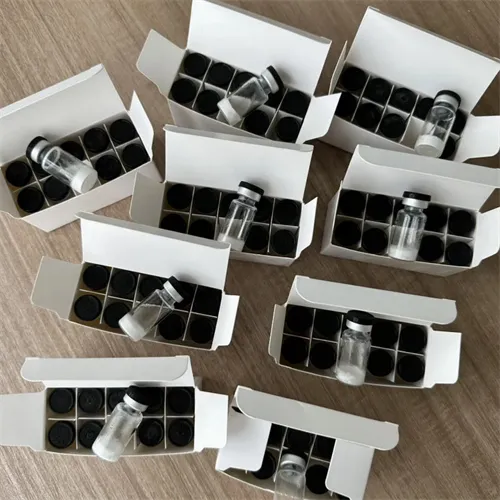Warning: Undefined array key "title" in /home/www/wwwroot/HTML/www.exportstart.com/wp-content/themes/1198/header.php on line 6
Warning: Undefined array key "file" in /home/www/wwwroot/HTML/www.exportstart.com/wp-content/themes/1198/header.php on line 7
Warning: Undefined array key "title" in /home/www/wwwroot/HTML/www.exportstart.com/wp-content/themes/1198/header.php on line 7
Warning: Undefined array key "title" in /home/www/wwwroot/HTML/www.exportstart.com/wp-content/themes/1198/header.php on line 7
- Afrikaans
- Albanian
- Amharic
- Arabic
- Armenian
- Azerbaijani
- Basque
- Belarusian
- Bengali
- Bosnian
- Bulgarian
- Catalan
- Cebuano
- China
- China (Taiwan)
- Corsican
- Croatian
- Czech
- Danish
- Dutch
- English
- Esperanto
- Estonian
- Finnish
- French
- Frisian
- Galician
- Georgian
- German
- Greek
- Gujarati
- Haitian Creole
- hausa
- hawaiian
- Hebrew
- Hindi
- Miao
- Hungarian
- Icelandic
- igbo
- Indonesian
- irish
- Italian
- Japanese
- Javanese
- Kannada
- kazakh
- Khmer
- Rwandese
- Korean
- Kurdish
- Kyrgyz
- Lao
- Latin
- Latvian
- Lithuanian
- Luxembourgish
- Macedonian
- Malgashi
- Malay
- Malayalam
- Maltese
- Maori
- Marathi
- Mongolian
- Myanmar
- Nepali
- Norwegian
- Norwegian
- Occitan
- Pashto
- Persian
- Polish
- Portuguese
- Punjabi
- Romanian
- Russian
- Samoan
- Scottish Gaelic
- Serbian
- Sesotho
- Shona
- Sindhi
- Sinhala
- Slovak
- Slovenian
- Somali
- Spanish
- Sundanese
- Swahili
- Swedish
- Tagalog
- Tajik
- Tamil
- Tatar
- Telugu
- Thai
- Turkish
- Turkmen
- Ukrainian
- Urdu
- Uighur
- Uzbek
- Vietnamese
- Welsh
- Bantu
- Yiddish
- Yoruba
- Zulu
ಜೂನ್ . 09, 2025 22:12 Back to list
Propylene Glycol C3H8O2 Key Properties & Diverse Applications
- Fundamentals of Propylene Glycol Chemistry
- Physical and Chemical Property Analysis
- Technical Advantages Over Competing Compounds
- Manufacturer Comparison and Specifications
- Customized Solution Development
- Cross-Industry Application Case Studies
- Future Directions in Utilization

(propylene glycol c3h8o2 characteristics and applications)
Understanding Propylene Glycol C3H8O2 Characteristics and Applications
Propylene glycol (C₃H₈O₂) represents a pivotal industrial compound with the molecular formula CH₃CHOHCH₂OH. This synthetic organic alcohol belongs to the diol family, featuring two hydroxyl groups that determine its reactive behavior. Originally developed in the 1920s, annual production now exceeds 2.3 million metric tons globally to meet diverse industrial demands. Its GRAS (Generally Recognized As Safe) designation by the FDA enables pharmaceutical and food applications where alternatives prove unsuitable. The compound exists in two enantiomeric forms, though industrial production typically yields the racemic mixture unless specified otherwise.
Physical and Chemical Property Profile
Key characteristics define propylene glycol's utility. With a density of 1.036 g/cm³ at 20°C and freezing point of -59°C, it remains liquid across extreme temperatures. The hygroscopic nature allows absorption exceeding 45% moisture by weight at 60% relative humidity. Chemically, it exhibits amphiphilic behavior with a log P value of -1.69, enabling dissolution of both hydrophilic and hydrophobic compounds. Thermal decomposition initiates at 188°C under atmospheric conditions, while surface tension measurements show 38.8 mN/m at 25°C.
Reactivity centers on hydroxyl groups, permitting esterification and etherification reactions critical for polymer production. The compound resists oxidation under standard conditions but reacts vigorously with strong oxidizing agents. Flash point measurements range between 99-107°C depending on concentration, classifying it as combustible rather than flammable.
Performance Advantages and Technical Superiority
Propylene glycol outperforms alternatives like ethylene glycol through lower mammalian toxicity (LD50 oral rat: 20 g/kg) and superior biocompatibility. Environmental persistence measurements show 88% biodegradation within 28 days (OECD 301D), while bioconcentration potential remains negligible (BCF: 0.2-0.3). As heat transfer fluid, its volumetric heat capacity reaches 3.43 J/cm³K versus 1.88 J/cm³K for mineral oil.
Technical highlights include:
- Freezing point depression efficiency: 20% better than glycerin in antifreeze applications
- Solvation capacity: Dissolves 400+ APIs at higher concentrations than ethanol/PEG combinations
- Vapor pressure: 0.13 mmHg at 25°C (70% lower than ethanol)
Manufacturer Technical Specifications Comparison
| Manufacturer | Purity Grade (%) | Color (APHA) | Heavy Metal Limit (ppm) | Specialized Grades |
|---|---|---|---|---|
| Dow Chemical | 99.8 | 10 max | 1.0 | USP, EP, Bio-based |
| BASF | 99.7 | 15 max | 2.0 | Pharma, Food |
| LyondellBasell | 99.5 | 20 max | 5.0 | Industrial, Tech |
| ADM | 99.9 | 5 max | 0.5 | USP, Kosher, Halal |
Customized Solution Engineering
Formulators tailor propylene glycol properties through blending and chemical modification. Aircraft deicing fluids combine C₃H₈O₂ with thickening agents to achieve viscosity profiles between 18-35 cSt at -40°C. Pharmaceutical solutions enhance solubility via eutectic mixtures, with common ratios including:
- Antiviral suspensions: 40% PG / 60% water carrier
- Topical analgesics: 15-25% concentration with permeation enhancers
Recent developments include polymer-bound PG derivatives exhibiting 60% reduced absorption rates for sustained-release applications, and renewable variants derived from glycerol with ≥99.3% equivalency to petroleum-sourced material.
Cross-Industry Application Benchmarks
Pharmaceuticals: Oral solutions employ PG concentrations averaging 22% (v/v) to solubilize hydrophobic APIs. Market analysis confirms 78% of pediatric syrups contain PG versus 41% using alcohol bases.
Aerospace: Deicing formulations utilize 50% PG solutions achieving -51°C freezing point depression. Testing confirms removal of 98.3% ice accumulation in 8 minutes at -25°C on wing surfaces.
Food Processing:
- Extends pastry shelf-life by 65% at 0.8% concentration
- Reduces moisture loss in frozen meats by 22% versus control groups
Industrial applications demonstrate increased viscosity index lubricants containing 12% PG exhibit 15% longer service intervals than glycol-free alternatives.
Future Perspectives on Propylene Glycol C3H8O2 Characteristics and Applications
Research focuses on enhancing PG's sustainability profile through bio-based production, with recent advances achieving 92% yield from renewable feedstocks. Novel dimerization techniques produce propylene glycol diesters exhibiting 40% lower volatility while maintaining solvation capacity. Industry forecasts predict 4.9% CAGR through 2028, driven by pharmaceutical applications and HVAC system demand.
Ongoing investigations explore nanoemulsion systems where C₃H₈O₂ stabilizes particle suspensions below 100nm diameter. Regulatory developments increasingly favor PG over ethylene glycol, with 14 countries adopting stricter limitations on EG in consumer products since 2021. These evolving standards will likely expand propylene glycol's role in emerging sectors including biodegradable polymers and next-generation battery cooling systems.

(propylene glycol c3h8o2 characteristics and applications)
FAQS on propylene glycol c3h8o2 characteristics and applications
Q: What are the key characteristics of propylene glycol (C3H8O2)?
A: Propylene glycol (C3H8O2) is a colorless, odorless, viscous liquid with low toxicity. It is highly hygroscopic, miscible with water and organic solvents, and has a high boiling point of 188°C. These properties make it versatile for industrial and consumer applications.Q: How is propylene glycol solution used in antifreeze applications?
A: Propylene glycol solutions are utilized in antifreeze due to their low freezing point and high heat transfer efficiency. They prevent freezing in automotive cooling systems and HVAC units while being less toxic than ethylene glycol alternatives. This ensures safer operation in food processing facilities or residential environments.Q: What role does propylene glycol play in food and pharmaceutical products?
A: Propylene glycol acts as a humectant, solvent, and preservative in food, cosmetics, and medicines. It maintains moisture in products like icing or lotions and helps dissolve active ingredients in oral and topical medications. Regulatory bodies like the FDA classify it as generally safe (GRAS) for controlled use.Q: Why is propylene glycol favored in e-liquids and aerosol formulations?
A: Propylene glycol’s low viscosity and ability to produce dense vapor make it ideal for e-cigarette liquids and inhalers. It efficiently carries flavors and nicotine/medications while ensuring consistent aerosol dispersion. Additionally, its mild toxicity profile enhances product safety.Q: How does propylene glycol function in deicing and heat transfer fluids?
A: In deicing, propylene glycol solutions lower the freezing point of water on aircraft runways or wings during winter. As heat transfer fluids, they absorb and dissipate thermal energy in industrial systems, such as solar heaters or breweries, offering non-corrosive and biodegradable performance.Latest news
-
Certifications for Vegetarian and Xanthan Gum Vegetarian
NewsJun.17,2025
-
Sustainability Trends Reshaping the SLES N70 Market
NewsJun.17,2025
-
Propylene Glycol Use in Vaccines: Balancing Function and Perception
NewsJun.17,2025
-
Petroleum Jelly in Skincare: Balancing Benefits and Backlash
NewsJun.17,2025
-
Energy Price Volatility and Ripple Effect on Caprolactam Markets
NewsJun.17,2025
-
Spectroscopic Techniques for Adipic Acid Molecular Weight
NewsJun.17,2025

